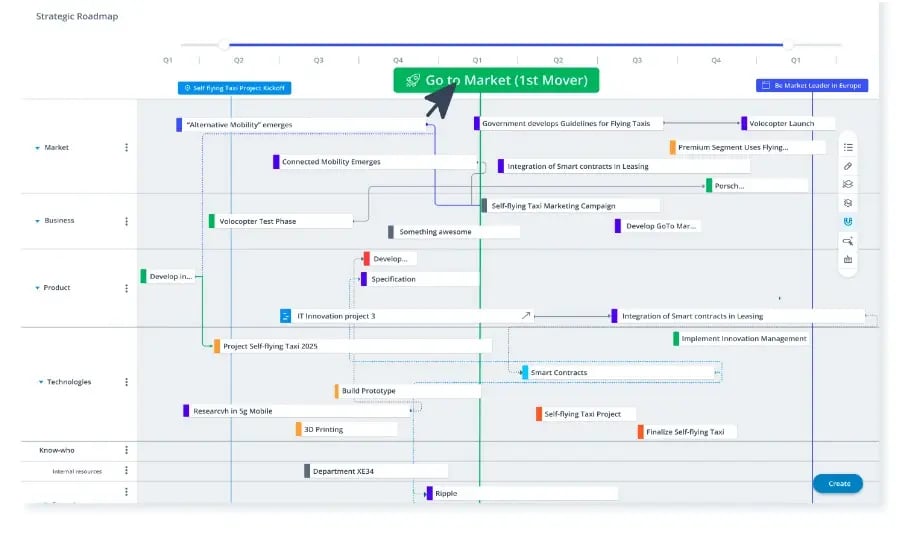Most companies still chase business growth by accident, relying on fortune, not systematic market opportunity exploration. Yet the chances of success rise dramatically when you purposefully spot unmet needs, hidden demand, or overserved markets before competitors do.
This guide shows how to identify market opportunities systematically and turn them into focused ideas and investments.
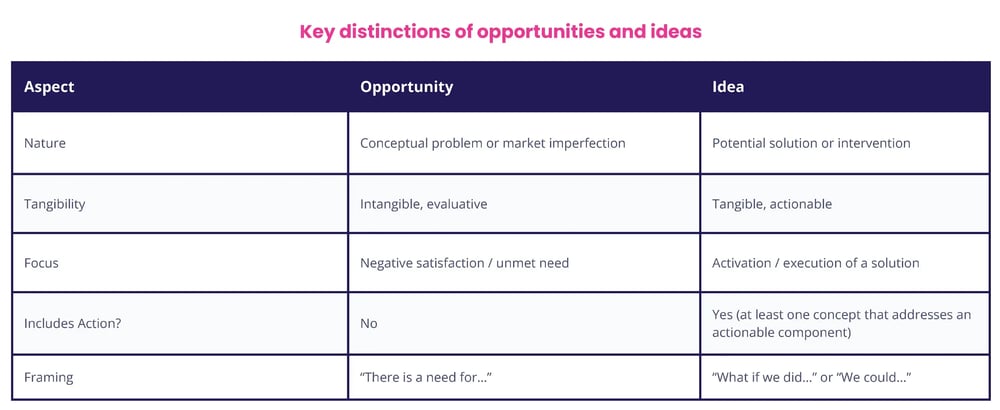
Summaries and FAQs on market opportunities
What is a market opportunity?
A market opportunity is a situation where unmet customer needs, underserved segments, or emerging shifts in technology, regulation, or behavior create space for new value creation. It signals potential for growth by offering something better, simpler, or more accessible than current offerings.
How is a market opportunity different from a business idea?
A market opportunity describes a situation, often expressed in terms of negative satisfaction or inefficiency. A business idea is a solution to that problem. In short: opportunities are about needs; ideas are about ways to meet them.
What are common types of market opportunities?
Market opportunities typically arise from
-
Unmet needs (no solution currently exists)
-
Underserved segments (existing solutions are inadequate)
-
Overserved markets (customers pay for more than they need)
-
Emerging trends (new behaviors or technologies)
-
Regulatory shifts (creating new playing fields)
How do I know if a market opportunity is worth pursuing?
Assess the size of the problem (market size), the urgency of the need, competitive gaps, and whether your company has - or can build - the right capabilities to address it. Use tools like trend analysis, opportunity maps, and jobs-to-be-done to spot market opportunities.
What tools help identify and evaluate market opportunities?
Methods include Outcome-Driven Innovation (ODI), Jobs to Be Done (JTBD), the Kano model, trend scanning, and Blue Ocean Strategy. Platforms like the ITONICS Innovation Software help teams visualize, score, and track opportunities and link them with strategic priorities, ideas, and projects.
How do market opportunities drive business growth
A market opportunity is a situation where unmet consumer needs, shifting market conditions, or gaps in the competitive landscape create space for a business to grow and increase total revenue. It is a market opportunity to create new value for customers and increase the total revenue.
It may involve targeting new customers, underserved segments, or changes in legislation or technological developments. A deep understanding of market opportunities truly allows companies to offer a better product or service than what currently exists.
It supports smarter investment decisions and opens up paths to business growth and competitive edge, especially in new markets. By acting early, businesses can gain a competitive advantage, establish a dominant position with a particular product, or unlock untapped growth potential.
Simple rules to differentiate market opportunities from business ideas
It’s easy to confuse a business idea with a market opportunity. But they are not the same.
A market opportunity is a crucial concept as it expresses a situation of an unmet, insufficiently met, or excessively served market segment, often framed through a qualitative evaluation of a market imperfection (customer dissatisfaction, inefficiency, or untapped potential).
A business idea is a thought or proposal for a solution. It includes at least one actionable step and reflects intent to address the identified problem. It is more tangible, since it points toward activation, design, or implementation, like launching a cheaper or simpler alternative.
For understanding market opportunities, ask this: “Is this describing a situation in a qualitative, often negative way?” If yes, it’s a market opportunity. If it’s a method, it’s an idea.
Below, we compare market opportunities and business ideas.
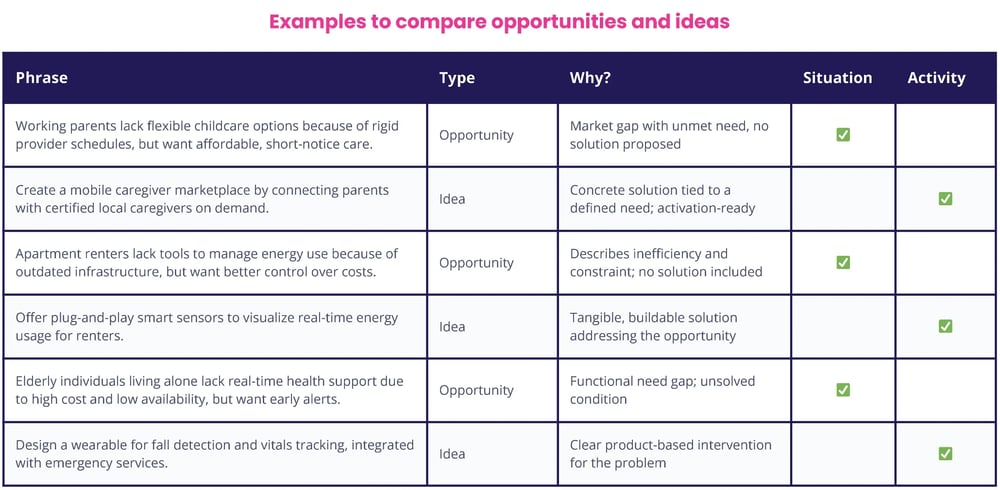
What makes a strong market opportunity statement?
A good opportunity statement describes the current market conditions, pain points, and why the existing market fails to solve them. Be specific and up-to-date about the market size, the gap in existing products or services, or the limits of direct competitors.
Clarity at this stage provides valuable insights and more accurate financial forecasting down the line. Whether the market opportunity is right for you depends on whether you have - or are willing to invest in - the right skills to target it.
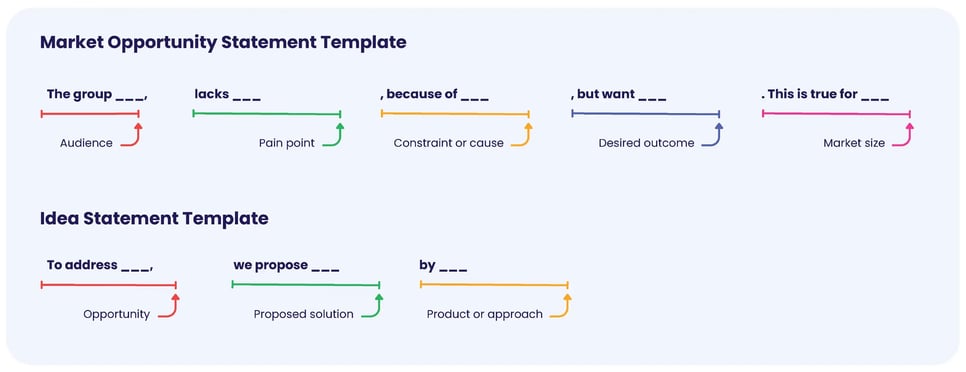
8 techniques to identify market opportunities
Proven techniques help uncover market opportunities systematically and uncover new competitive advantages. The following 8 techniques are used to explore market opportunities, assess market size, and build stronger, insight-driven business plans.
1. Outcome-driven innovation (ODI) to surface unmet consumer needs
ODI is a structured method for identifying market opportunities based on what customers want to achieve and how satisfied they are with current solutions.
 <
<
Opportunity maps help uncover needs that are both important and poorly served by existing products or services. These gaps often point to high-potential areas for business growth and business opportunity development.
2. Jobs to be done (JTBD) for understanding hidden new market demands
JTBD looks at what people are trying to accomplish. Customers “hire” a product or service to do a specific job, whether functional or emotional.
By mapping these jobs, organizations can identify growing demand that isn’t rightly met by existing market offerings. It also helps reveal new market segments that traditional market research might miss, especially in mature markets where innovation seems slow.

3. Trend and market research to anticipate new market needs
Tracking trends across emerging technologies, economic development, or regulatory framework changes is essential for anticipating future market conditions. These signals often emerge before customers can articulate them.
Conducting systematic environmental scouting allows companies to stay ahead of new competitors, evolving target audiences, and shifting customer segments. This is critical for launching new business models or entering market opportunities in other regions where habits or legislative frameworks differ.
/environmental-scanning-process.webp?width=966&height=544&name=environmental-scanning-process.webp)
How to derive a market opportunity from a trend
A market opportunity always highlights pain points and insufficiencies in situations. In contrast, trends show us how the world is changing. They highlight shifts in consumer behavior, technology, regulation, or culture.
To derive an opportunity from trends, it is important to reveal what new pain points or insufficiencies will emerge if the trend unfolds. It is a future guess and speculative design, yet it holds huge potential to explore business opportunities before competitors.
The best way to craft market opportunities from trends is by using the 4 opportunity levers framework:
-
Changing needs (unlock new gains): What new expectations or behaviors will arise as people adopt this trend?
-
Friction (unlock future pain points): What will become harder, more frustrating, or less compatible with existing systems as the trend grows?
-
Underserved segments (unlock niche opportunities): Who will be left behind or poorly served by this shift?
-
System mismatches (unlock necessary system changes): What parts of today’s infrastructure, regulation, or business models will break or lag?
We use the trend “from owning to renting” to explain how to apply the 4 opportunity levers.
From a changing needs perspective, the ownership model locked users into long-term commitments, struggling with outdated products, and facing upfront costs. As they move toward renting or subscribing, they will expect those pain points to disappear. This opens opportunities for offerings that are flexible, easy to update, and cancel.
Every shift brings new challenges. Renting or subscribing introduces complexity: users must manage multiple platforms, track usage, and avoid overlapping costs. This creates opportunities for tools that help consumers compare, manage, or streamline their subscriptions.
Not everyone benefits equally from new models. In areas with poor logistics or unreliable internet, access-based services can fail. Older consumers may also struggle with digital-only rentals. Here, we find opportunities to design alternative models.
Infrastructure built for ownership doesn’t always support renting. Insurance, repair, and warranties are designed for owners, not temporary users. This mismatch reveals opportunities for more short-term, usage-based, or rental-specific solutions.
Opportunities can emerge from pain points in the current situation or based on the development of future trends.
Our ODF provides you with a systematic template to derive and map market opportunities.

4. Demand–supply gap analysis to explore the underserved market size
This technique compares market potential to the actual market share served by current direct competitors and indirect competitors. It highlights when specific markets are not being addressed effectively.
Understanding these gaps supports smarter purchase situation analysis and helps develop business plans that match the real, measurable market size. It’s especially useful in identifying high-demand areas with low competition or not up-to-date business strategies.
5. Use disruptive innovation theory to enter a new market
Disruptive innovation happens when incumbents move up-market. They add more and more features and make their products or services more complex and expensive. These market opportunities provide the chance for new entrants to offer simpler, affordable products or services and to enter a mature market.
Disruptive innovations typically start by serving potential customers who are ignored or overserved.
By targeting a specific market with lower performance expectations, companies can grow into a larger segment over time. It’s especially effective when current products are overloaded with features that many users don’t need.
6. Apply the Kano model to align features with business growth potential
The Kano model classifies product features into three types: basic needs, performance features, and delighters. Understanding these categories allows teams to focus on what truly drives customer satisfaction and business potential.
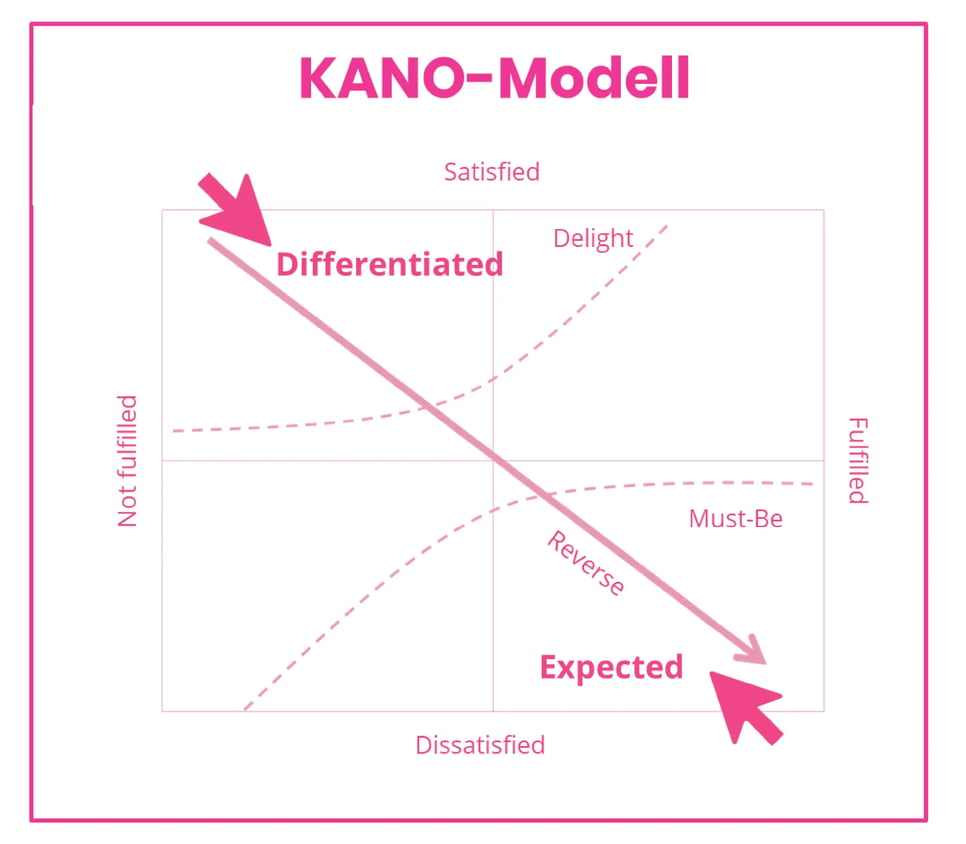
Many teams unknowingly invest in features that have little effect on retention or revenue. Instead, using Kano can support informed decisions about which features to build, improve, or eliminate.
When applied consistently, the Kano model contributes to growth potential by balancing product development with actual customer needs and evolving market opportunities.
7. Customer journey pain point mapping to sharpen market share focus
Every market segment contains customer experience gaps. By mapping the full journey, from awareness to post-purchase, teams can uncover where users face frustration, friction, or drop-off.
These pain points are often ignored by direct and indirect competitors, providing easy-to-address market opportunities.
This technique also helps tailor solutions to more customers, especially when entering other countries or adapting to local habits.
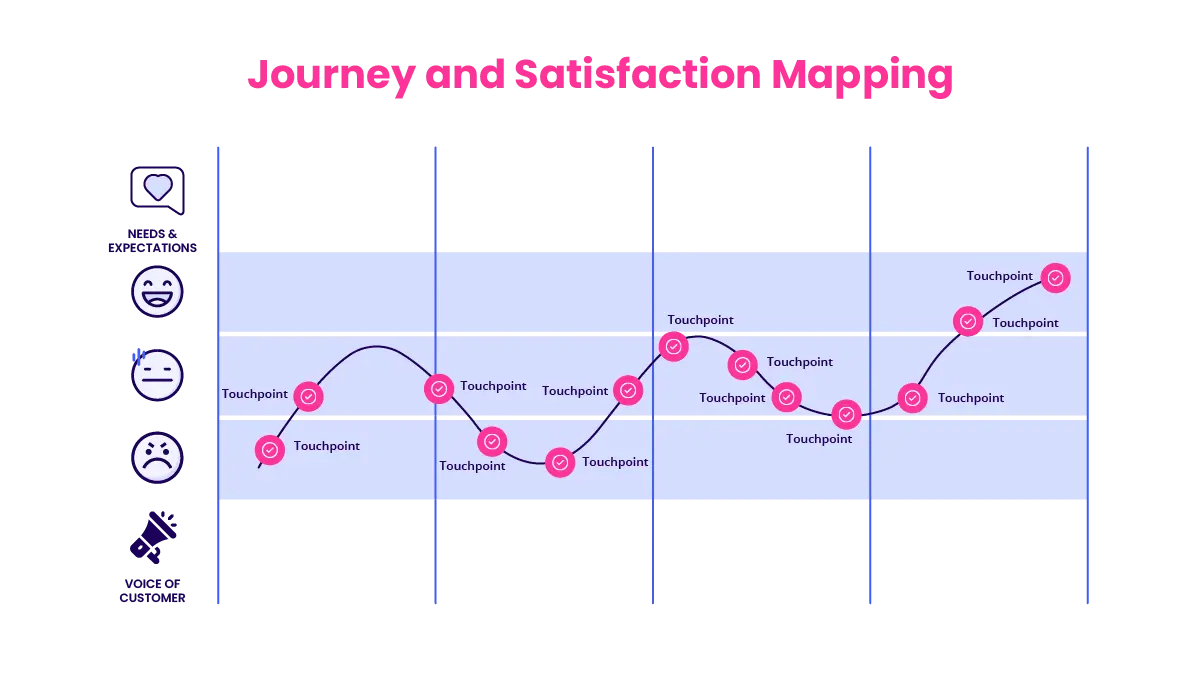
8. Value curve and blue ocean strategy for competitive analysis
The strategy canvas (also called the value curve) helps visualize how your offer compares to competitors across key attributes. The goal is to identify market opportunities where you can reduce, eliminate, raise, or create value, unlocking a true business opportunity.
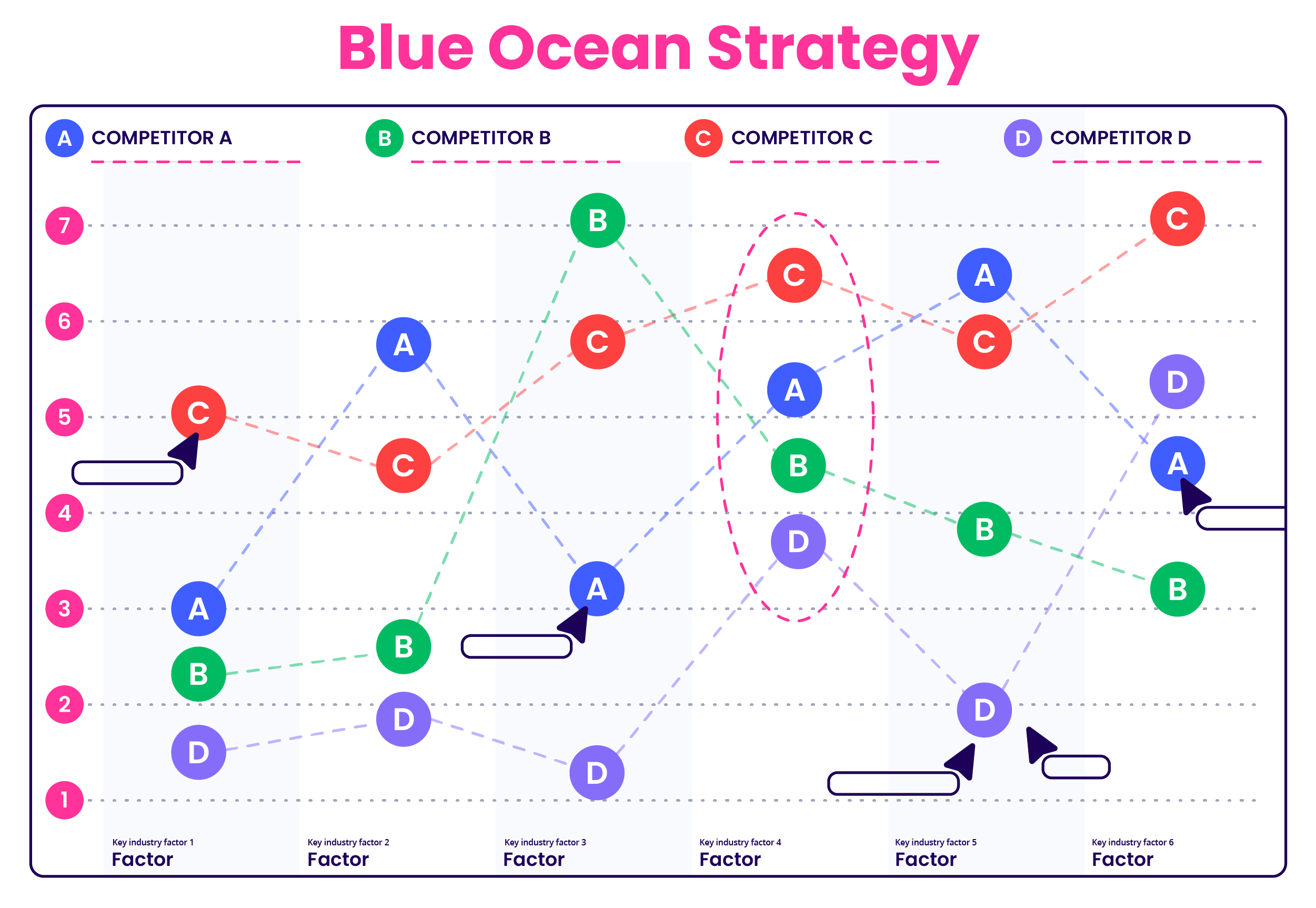
Combined with the blue ocean strategy, it encourages a shift away from fighting over saturated segments. Instead, companies explore new, uncontested markets.
This structured competitive analysis supports bold moves into new markets, with clear differentiation and reduced pricing pressure.
Tools for turning opportunities into business plans and marketing strategies
A deep understanding of market opportunities opens a structured innovation process. They should guide any idea collection and budget allocation. They provide the direction for educated investments and reduce risky failures.
To identify market opportunities, companies need to comprehensively scan their core and adjacent business environment when their innovation strategy prioritizes massive growth. Leading companies rely on market research, competitive analysis, and trend insights to build a comprehensive opportunity radar.
The opportunity radar lists the characteristics of each market opportunity. This includes assessments of market size, descriptions of target markets, and forecasting growth potential. The opportunity radar turns this information into a decision room. It provides clear visibility into the competitive landscape, current market offerings, customer needs, and easily shows what market opportunities are the most attractive.
Additionally, modern software uses AI to automate the environment scan and inform about emerging market opportunities. They also help with assessing potential profit, informing about regulatory frameworks, and relating technological developments.
After identifying market opportunities, the next step is to collect ideas about how to best address the opportunity. One example is collecting internal ideas. Another example is scouting for start-ups that may already provide fitting solutions. No matter what, it's essential to unite the different options into a clear board view, easing the comparison, collaborative evaluation, and selection of the best idea.
Once the best idea is selected, this idea is funded and needs to follow a clear project governance regime for making sure that the capita consumption pays off. A clear project plan and roadmap is needed to track the individual project, but also see its evolution along the complete product roadmap, concluding with the development of sound marketing strategies like content marketing, public relations, online courses, or search engine optimization.
Find your next best opportunity with ITONICS, the best innovation software.
Any organization with growth ambitions needs to connect comprehensive market research with its capability portfolio to create sound business strategies. The ITONICS Innovation Software is the best for integrating the scouting of market conditions, idea collection, and clear action plans.
Turn opportunity into action: ITONICS helps identify new technologies and translate them into market opportunities. Link trends with your products or services, and resources to identify your next best business opportunities.
Support corporate strategy with foresight: Empower your strategic planning teams with data-rich insights on growth potential, new competitors, and emerging target markets. Use roadmaps to communicate your strategy and prioritize the most promising market segments.
Connect business teams with opportunities: Share the most interesting opportunities with your teams and let them find the best ways to address those. ITONICS allows you to collect, relate, and prioritize ideas collaboratively - connecting execution with strategic goals and resource efficiency.


